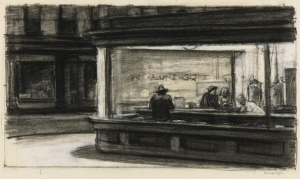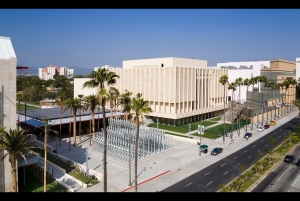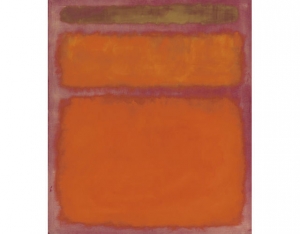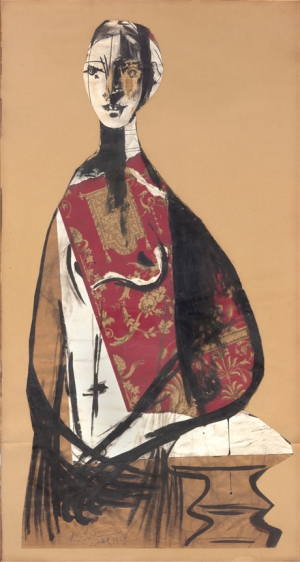|
Displaying items by tag: Museum

Hopper Drawing, which opens today, May 23, 2013 at the Whitney Museum of American Art in New York, is the first major museum exhibition to focus on the drawings and creative process of Edward Hopper (1882-1967). Known for his enigmatic renderings of rural and urban American life, Hopper’s paintings of seascapes, cityscapes, and their inhabitants are some of the most significant artworks of the 20th century.
The Whitney’s exhibition is not just a presentation of Hopper’s best-known works; it is a rare glimpse into the creative process that produced one of the most lauded oeuvres in modern art. Hopper’s drawings illustrate his ever-changing relationships with his subjects, which include the street, the movie theater, the office, the bedroom, and the road. Drawn from the Whitney’s remarkable Hopper collection, which includes 2,500 drawings given to the museum by the artist’s widow, Josephine, Hopper Drawing includes drafts of some of Hopper’s most recognized works alongside their oil painting counterparts. Works on view include Early Sunday Morning (1930), New York Movie (1939), Office at Night (1940), and Nighthawks (1942) together with their prepatory drawings and related works. The exhibition also includes pioneering archival research into the buildings and urban spaces that inspired Hopper’s work.
Drawing Hopper will be on view at the Whitney through October 6, 2013.

Henri Matisse: La Gerbe is currently on view at the Los Angeles County Museum of Art and highlights the artist’s final commissioned work. Henri Matisse (1869-1954) created La Gerbe (The Sheaf), a 2,000 lb., 18 x 20-foot ceramic piece, in 1952 for the home of Los Angeles-based philanthropists Sidney and Frances Brody. Mrs. Brody promised the work to LACMA in honor of the museum’s 25th anniversary and donated it to the institution in 2010. This event marks the first time that La Gerbe has been displayed alongside its full-scale maquette, which is on loan from the University of California’s Hammer Museum.
Late in his career, Matisse developed his cut-out technique, which involved cutting organic shapes out of colored paper and arranging them on his studio’s walls. Giving the artist a renewed sense of freedom, Matisse lauded the technique for its immediacy and simplicity, which he believed helped him express his artistic urgencies more completely.
When he received the commission from the Brody’s, Matisse created a full-scale paper cut-out of his design, which he showed the couple during their visit to his studio in Nice, France. The Brody’s rejected the first design but accepted a second full-scale cut-out, which is the maquette included in LACMA’s exhibition. The final La Gerbe was executed in ceramic and consisted of 15 sections, which were shipped to Los Angeles in 1954 following the artist’s death. The work was installed on the Body’s patio wall where it remained until Frances’ death in 2009. The work was permanently installed at LACMA in 2010.
LACMA’s exhibition includes other major works from Matisse’s cut-out period including Madame de Pompadour (1951) and Jazz (1947), a historic book of 20 prints, which is considered the artists’ first major project using the cut-out technique.
The La Gerbe exhibition will be on view at LACMA through September 8, 2013.

On Wednesday, May 1, 2013 the Los Angeles County Museum of Art announced that they will publicly unveil plans for a new building next month. The institution has picked Pritzker Prize-winning architect Peter Zumthor to design LACMA’s new home.
The project is expected to cost $650 million and will include the demolition of the original LACMA building, which was built in 1965, as well as an addition that was constructed in 1986. Dutch architect Rem Koolhaas proposed a similar plan in 2001 but fundraising problems prompted the museum to cancel the project. Michael Govan, the current director of LACMA, has been ramping up fundraising efforts since he joined the museum in 2006 and has succeeded in expanding donor funding and enlarging the museum’s board.
Under Govan’s direction, LACMA had opened two buildings designed by Renzo Piano, the Broad Contemporary Art Museum, and the Resnick Pavilion. Zumthor’s plans leave the newer buildings untouched as well as the Pavilion for Japanese Art, which opened in 1988.

On May 1, 2013 the Van Gogh Museum in Amsterdam will re-open after being closed for months due to ongoing renovations. The exhibition that will inaugurate the newly updated space is Van Gogh at Work, an extensive overview of Vincent van Gogh’s (1853-1890) oeuvre that happens to coincide with the 160th anniversary of the artist’s birth. What the Van Gogh Museum kept quiet until now is that the exhibition will reveal research amassed during an eight-year analysis of the artist’s work.
The project, which was led by scientists at Shell in collaboration with the Dutch Cultural Heritage Agency and curators at the Van Gogh Museum, entailed analyzing hundreds of van Gogh’s canvases, pigments, letters, and notebooks. The research provided previously unknown insights into van Gogh’s temperament and personality. Contrary to popular belief spurred by the artist’s struggles with mental illness, van Gogh was not a manic painter, but painstakingly methodical. The use of an electric microscope and X-ray fluorescence spectrometry revealed that van Gogh used grids to accurately portray proportions and to create precise depth of field in his early landscapes.
Another insight the researchers uncovered involved van Gogh’s pigments. Tests done at the Shell Global Solutions labs revealed that some of the pigments used by van Gogh were chemically unstable and faded prematurely. In particular, scientists discovered that the color of the walls in van Gogh’s seminal painting The Bedroom was inaccurate. Van Gogh had used red and blue paints to create a violet hue but the red faded, leaving behind a much bluer color than he intended.
Beginning in September, the Van Gogh Museum will exhibit two versions of The Bedroom – one from its own collection and one from the Art Institute of Chicago’s collection. Van Gogh painted three versions of his room in Arles between 1888 and 1889 and all three of them have the same blue-hued walls. The presentation will also include a digital reconstruction of what the painting may have looked like when van Gogh first created it.
Van Gogh at Work will be on view through January 12, 2014.

Amsterdam’s Van Gogh Museum is gearing up to re-open to the public after closing earlier this year for renovations. Masterpieces such as Sunflowers, The Bedroom, Irises, and The Potato Eaters were returned to the museum on Friday, April 26, 2013 after seven months on view at the Hermitage Museum. The museum is slated to re-open on May 1, 2013 with the exhibition Van Gogh at Work inaugurating the newly updated space.
Updates to the Van Gogh Museum began in 2010 after intensification in fire safety regulations. Most of the recent refurbishments centered on the replacement of the museum’s air conditioning installations. The museum is now equipped with a modern and sustainable air conditioning unit that allows the right climatic conditions to be set for each room. The structure’s roof was also replaced and outfitted with extra insulation, the floors have been replaced, and the walls are newly repainted.
The Van Gogh Museum, which opened in 1973, houses the largest collection of Vincent van Gogh’s (1853-1890) paintings and drawings in the world. Van Gogh at Work will coincide with the 160th anniversary of the artist’s birth and offers an extensive overview of Van Gogh’s oeuvre. The exhibition will be on view through January 12, 2014.

A museum honoring the painter Mark Rothko (1903-1970) opened on April 24, 2013 in the artist’s hometown of Daugavpil, Latvia. Rothko, who was born Marcus Rothkovitz, lived in the southern city then known as Dvinsk and in the Russian empire, until he was 10. Rothko and his family fled Europe in 1913 as anti-Jewish sentiments began to rise.
Rothko went on to become a remarkable artistic force in American modern art. Often called an Abstract Expressionist, Rothko opposed classification and even disliked being called an abstract painter even though some of his best-known paintings are comprised of nothing more than blurred blocks of color. Rothko continues to play a prominent role in the art world as his paintings are highly sought after by collectors. Last year, his large-scale painting Orange, Red, Yellow (1961) garnered $86.9 million at auction, setting a record for any contemporary work of art.
The Mark Rothko Art Centre features a small selection of key works from the artist’s oeuvre, which were donated by Rothko’s family. The museum also includes lecture rooms and artist studios. The Centre is being funded by the European Union and Daugavpil’s city council in hopes that the institution will help transform the city into a popular tourist destination.

The Louvre’s new outpost in Abu Dhabi, which is slated to open in 2015, has assembled the 130 paintings, miniatures, sculptures, and other artworks that will form its permanent collection. Museum officials allowed reporters a sneak peek of the works including paintings by Pablo Picasso (1881-1973), Rene Magritte (1898-1967), Édouard Manet (1832-1883), and Paul Gauguin (1848-1903). The entire collection will be on view from April 22 to July 20, 2013 as part of the exhibition The Birth of a Museum at a gallery on the island of Saadiyat, close to where construction for the new museum is currently underway.
Louvre Abu Dhabi’s collection is comprised of numerous works from private collections, many of which have never been on public view before. Highlights from the museum’s holdings include Picasso’s gouache, ink, and collage work on paper Portrait of a Lady (1928); Gauguin’s Children Wrestling (1888); and Paul Klee’s (1879-1940) Oriental Bliss (1938).
The Louvre’s new venue, which was designed by the French architect Jean Nouvel, is the museum’s first branch outside of France. The venture is expected to bring the Louvre and its French partner museums approximately $1.31 million over 30 years. The Louvre also has an offshoot location in the northern city of Lens.
Pickpockets have always been most prevalent at locations that attract a high volume of tourists such as the Louvre. However, the pickpocketing problem at the French museum has gotten so severe that 200 members of the institution’s staff staged a walkout earlier this week in protest of the pickpocket gangs that target visitors. The museum reopened to the public on Thursday, April 11, 2013 with a squad of approximately 20 uniformed police officers patrolling the grounds.
The police officers were recruited in response to staff concerns. Many Louvre employees have endured violent altercations with pickpockets including being spat at, insulted, and hit. Many of the criminals return to the museum repeatedly after being barred from the premises. Museum officials hope that a strong police presence will deter pickpockets from setting up shop at the Louvre, which sees about 10 million visitors each year.

The Art Institute of Chicago announced that they have acquired Thomas Hart Benton’s (1889-1975) Cotton Pickers (1945), a critical example of American Regionalism, a realist modern art movement that gained popularity during the 1930s. Regionalist artists forsook urban life in favor of creating scenes of everyday rural life in America. Benton was a pioneer of the movement and is considered a pivotal figure in American art.
Cotton Pickers is a rare example of Benton’s large-scale paintings and it is the first oil painting by the artist to enter the museum’s collection. It will bolster the Art Institute’s world-renowned collection of paintings from the period, which includes Grant Wood’s (1891-1942) iconic painting American Gothic (1930) and John Steuart Curry’s (1897-1946) Hogs and Rattlesnakes (1930). The addition of Cotton Pickers helps the Art Institute tell the story of Regionalism more fully. Judith Barter, the Field-McCormick Chair and Curator in the American Art Department, considers the painting one of the museum’s most important acquisitions in the last several decades.
Cotton Pickers will be exhibited alongside American Gothic and Hogs and Rattlesnakes.

The descendants of a Parisian art dealer are demanding that the Henie Onstad Art Center near Oslo, Norway return Henri Matisse’s (1869-1954) Blue Dress in a Yellow Armchair (1937) to them. Nazis seized the painting from its owner, Paul Rosenberg, prior to the outbreak of World War II. Ultimately, Rosenberg, one of the most prominent French art dealers and a personal friend of Pablo Picasso and Matisse, fled to New York and survived the war.
The painting in dispute has been a celebrated part of the Onstad’s collection since the museum was established in 1968. The work was donated to the fledgling institution by art collector Niels Onstad and his wife Sonjia Henie, an Olympic figure skater. Museum Director Tone Hansen attests that Onstad and Henie bought the painting from the Parisian Galerie Henri Benezit in 1950, unaware of its troublesome provenance. Hansen was unaware that Nazis had stolen the painting until the Art Loss Register, an organization that tracks lost and stolen paintings, notified him in 2012.
Art Registry documents show that Rosenberg purchased Blue Dress in a Yellow Armchair directly from Matisse in 1937. Following World War II, Rosenberg attempted to re-establish his business and tried to recover the 400+ works that had been taken from him by the Nazis. The painting was marked on Rosenberg’s personal documents as missing after the war. He also reported the painting missing to French authorities in 1946.
While Rosenberg’s heirs hope that the painting will be returned to their family, Norwegian law states that if a person has had an item in good faith for over 10 years, they are deemed the rightful owner. However, the argument is in contrast to the Washington Conference Principles on Nazi-Confiscated Art, which Norway is a part of.
|
|
|
|
|